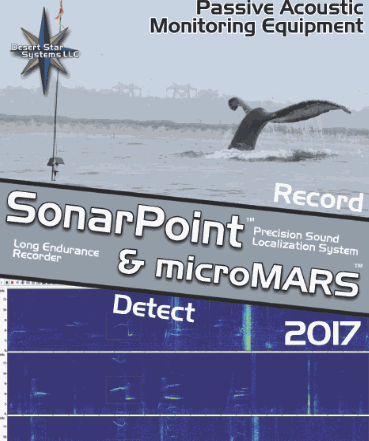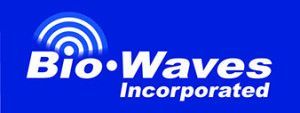MicroMARS
Passive Acoustic Marine Recorder

MicroMARS opens the door to routine and cost-effective underwater acoustic monitoring on a large scale. To date, acoustic recorders have tended to be ponderous devices in large housings crammed full of batteries and storage devices. With microMARS, these days are gone. Making use of the latest miniaturized storage, data transfer, and processing technology, microMARS is the size of a ‘tall boy’, yet it packs a punch: up to two terabytes of memory translates to 460 days of storage continuous at 25kHz sample rate or 46 days at the recorders maximum 250kHz rate. A single ‘D’ size lithium battery is sufficient to operate the recorder for approximately 10-12 days at 25-250kHz. An acoustic event detector marks data segments of potential interest. With its replaceable transducer end caps, MicroMARS can be optimized for high or low-frequency sampling, and housing options are available for 300m, 1000m and 4000m depth ratings.
Please refer to the SonarPoint webpage
SonarPoint
MM300-2
Low
- 300m Depth Rated
- 1TB Max Memory, 2SD Cards
- Single Battery
- Short term
MM300-8
Mid
- 300m Depth Rated
- 4TB Max Memory, 8SD Cards
- Quad Battery
- Medium to long-term
MM1000-8
High
- 1000m Depth Rated
- 4TB Max Memory, 8SD Cards
- Quad Battery
- Deep see
Battery Lifetime and Hydrophone Selection
Battery Lifetime
Your MicroMARS will have varying lifetimes based on the chosen sample rate and purchased model. Table 1.0 below illustrates the approximate battery lifetimes on sampling rates. Red indicates 8 SD card models (MM300-8 and MM1000-8).
| Sample Rate (kHz) | Endurance (Days) | Memory (GB) | SD Cards (GB) |
| 25 | 27/115 | 108/463 | 64 * 2/ 64 * 8 |
| 100 | 22/96 | 359/1540 | 256 * 2/ 256 * 8 |
| 250 | 17/71 | 670/2876 | 512 * 2/ 512 * 8 |
| 416 | 13/56 | 871/3738 | 512 * 2/ 512 * 8 |
Hydrophone Options
Hydrophones may be customized with high-pass and low-pass filters where needed.
| Hydrophone | Frequency | DB | Price |
| MH33 | 33 | 165 | 700 |
| MH125 | 125 | 165 | 700 |
Cost-Effective Solution
Combine microMARS with our ARC-1 Acoustic Release, and you have a complete, miniature-sized acoustic monitoring package for significantly less than an acoustic recorder alone otherwise costs. Attach a


microMARS development was sponsored by
Audio Samples
Moored in Quiet Environment
Recordings from microMARS units moored at a boathouse on the Baltic sea during both the day and night. This is an example of a quiet environment. The set-up was an MH33-2 hydrophone end cap operating at 146dB. Manfred Salzwedel aided in data collection.
Recording Ferry in Harbor
In this file, the
Recording in Los Padres Reservoir
Another example of a quiet environment was collected at the Los Padres Reservoir in Cachagua, California. The microMARS was deployed at 3m depth from the surface and the water was relatively calm with small surface ripples. In the beginning, you can hear Marco banging rocks underwater about 50m away. The set-up was an MH33-2 hydrophone end cap operating at 146dB.
Whales and Sea Lions
We had an abundance of humpback whales and sea lions in Moss Landing, California this year so we used this opportunity to take the microMARS out and listen. The set-up was an MH33-1 hydrophone end cap operating at 166dB.
Orca's
These three recordings are from Orcas in the (Salmon Flats) San Juan Islands, Washington. The first audio sound is what we classified as buzzing, the next is clicking, and finally whistling. The set-up for all three recorders was an MH33-2 hydrophone end cap operating at 146dB. Tom Norris of Biowaves and Ken Balcomb of the Center for Whale Research both aided in data collection.
Bottlenose Dolphins
This audio file is a recording of bottlenose dolphins in the surf, swimming around the Channel Islands. The set-up was an MH33-2 hydrophone end cap operating at 146dB. Shannon Coates aided in data collection.
Snapping Shrimp in Monterey Bay
Finally, we caught the lovely music of the Monterey Bay, California snapping shrimp. The set-up was an MH33-1 hydrophone end cap operating at 166dB.
Aqua Map Positioning Systems
Using underwater acoustic sound to triangulate the location of targets (remotely operated vehicles, divers or other objects), this is the set-up with an MH33-2 hydrophone end cap operating at 146dB.
